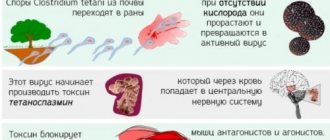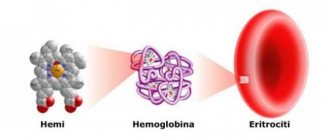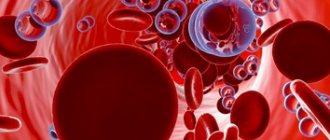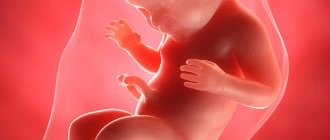A pinched nerve is most often not dangerous: rest and treatment will help relieve the compression and restore nerve function within a few days or weeks. But in rare cases, the situation is so serious that surgical intervention is necessary.
A pinched nerve is a condition in which too much pressure is placed on a nerve by nearby tissue. These can be muscles, cartilage, tendons, bones. As a result, the functioning of the nerve is disrupted. First of all, this is manifested by pain in the corresponding part of the body, as well as a decrease in muscle strength and tone, a feeling of numbness, tingling, and decreased sensitivity.
The most typical example of pinched nerves is compression of the spinal cord roots by a herniated disc. If this happens in the lumbar region, then sciatica usually occurs - pain that spreads along the back of the leg, along the sciatic nerve. Another fairly common condition is carpal tunnel syndrome, where the tissue in the wrist area swells and puts pressure on a nerve.
Nerve compression is a very common condition and one of the most common reasons for visiting doctors. According to American scientists, the pathology occurs in 85 people out of one hundred thousand adults. It can happen at any age, but most often occurs in people over 50 years of age. The most common cause is arthrosis and degenerative changes in the spinal column.
General information
Hypoxia is a pathological condition characterized by insufficient oxygen content in tissues and blood ( hypoxemia ) or disruption of its utilization processes during biological oxidation with the development of secondary nonspecific functional/metabolic disorders and subsequent adaptation reactions.
The term “hypoxia” usually refers to various variants of oxygen deficiency, but sometimes in the literature the term “hypoxemia” is distinguished, meaning a decrease in O2 tension in the blood, “anoxemia” - the absence of O2 in the blood and “anoxia” - the absence of O2 in the tissues, but true anoxemia / anoxia is extremely rare. In practice, anoxia occurs only in laboratory conditions. Quite often in everyday life you can hear the expressions “brain hypoxia”, “heart hypoxia”.
What does this mean? This means that the brain structures or heart muscles lack oxygen. However, it is necessary to distinguish hypoxia from ischemia , in which a decrease in volumetric blood flow in tissues is primarily observed, which is accompanied by a natural decrease in O2 tension. During ischemia, insufficiency of ATP synthesis acutely develops, and it is mainly the result of a decrease in the supply of energy substrates (glucose) to the tissues, in contrast to hypoxia, in which ATP synthesis gradually decreases as a result of a decrease in oxygen tension in the tissues. Therefore, tissue damage during the development of ischemia develops faster than in cases of hypoxia.
It is important to note that not all organs and tissues of the body have the same sensitivity to O2 deficiency. The central nervous system and, above all, the cerebral cortex react most acutely, which reacts even to a slight lack of oxygen in the brain, and in cases of a significant decrease in oxygen tension in the brain tissue, severe/irreversible changes develop. The myocardium is also quite sensitive to lack of oxygen.
Normally, there is an equilibrium between capillary blood and alveolar air and the O2 pressure at the end of the pulmonary capillaries is practically no different from the O2 pressure in the alveolar air. Oxygen is transported through the blood to the tissues, where it leaves the capillaries and enters the cells along a partial pressure gradient. After which PO2 in venous blood decreases and becomes (on average 55 mm Hg) less than in arterial blood. Oxygen in the blood is mainly bound to hemoglobin, and only a small part of it is dissolved in the plasma. At the same time, 1 g of hemoglobin at full saturation binds 1.3 ml of oxygen. When breathing air, normal O2 saturation is about 98%. The binding of hemoglobin to oxygen depends on O2 pressure and this dependence is described by the S-shaped curve (Fig. below) of oxyhemoglobin dissociation.
It must be taken into account that hypoxia should not always be considered only as a pathological process. A person in his daily activities often experiences the effects of so-called “physiological hypoxia”, which can form during intense muscular work in the skeletal muscles, with pronounced mental stress in the brain tissue, as well as in the gastrointestinal tract, liver, kidneys with excessive physiological activity of these organs (stress hypoxia). It is important to take into account that periodically occurring physiological hypoxia in various tissues often acts as a natural irritant that activates various reactions of the body, including reflex ones, changing the overall activity of the body and target organs.
The body of a healthy person in most cases is exposed to exogenous acute hypoxia, which is usually caused by a decrease in the partial pressure of O2 in the inhaled air/gas mixture during extreme conditions in certain professions/sports (pilots, divers, high-altitude tourists, climbers, submariners). Extreme medicine is also associated with the concept of acute hypoxia (acute blood loss, trauma, heart attack , stroke , poisoning, airborne infections, endogenous/exogenous intoxication, etc.).
Characteristics of adaptive reactions during hypoxia (acute and chronic)
Hypoxia of any type, caused by various factors, is accompanied by immediate/delayed activation of characteristic adaptive reactions at all levels - behavioral, systemic/organ, molecular-cellular, aimed at maintaining homeostasis . The structure of the adaptation system for hypoxia includes the heart/vascular system, lungs, blood, regulatory systems and biological oxidation systems. Under conditions of the development of acute hypoxia, adaptation mechanisms are of an urgent/functional nature, while in chronic hypoxia long-term structural adaptation is involved.
Adaptation reactions during acute hypoxia
External respiration system
Adaptation is ensured by deepening/increasing respiratory excursions and involving reserve alveoli in the respiratory process with an adequate simultaneous increase in pulmonary blood flow. At the same time, the minute volume of ventilation/perfusion can increase 10-15 times relative to the resting state. The appearance of hyper/tachypnea is ensured by activation of peripheral/central chemoreceptors against the background of hypoxia, changes in blood gas composition, hypercapnia and acidotic changes in the blood.
Heart/vascular system
In response to a lack of oxygen, adaptive hormones are released, the sympathoadrenal system is sharply activated, which causes tachycardia , an increase in IOC, volumetric/linear blood flow velocity, and an increased release of deposited blood. At the same time, against the background of the release of catecholamines and activation of the sympathoadrenal system, the so-called “blood flow redistribution phenomenon” develops, which contributes to the narrowing of arterioles and a decrease in blood flow to the vast majority of peripheral organs/tissues (abdominal organs, subcutaneous tissue, muscles). As a result, the centralization of blood flow in the vessels of the heart, brain, and respiratory muscles increases.
Blood system
Quantitative/qualitative changes are noted in the blood system. Quantitative adaptive changes occur under the influence of high concentrations of corticosteroid / thyroid hormones / catecholamines and are expressed in an increase in the mass of circulating blood due to the increased release of red blood cells from the bone marrow / blood cells from the depot. Qualitative changes are caused by an increase in the affinity of Hb for oxygen in the capillaries of the lungs.
Biological oxidation systems
Adaptation occurs due to the activation of metabolism and is characterized by an improvement in the efficiency of the absorption of oxygen and various oxidation substrates by body tissues, the delivery of oxidation substrates to mitochondria, an increase in the coupling of phosphorylation/oxidation processes and a sharp activation of glycolysis.
The figure below shows adaptation reactions during acute hypoxia.
Adaptation reactions during chronic hypoxia
External respiration system
The basis for ensuring a sufficient level of gas exchange is an increase in the power of the respiratory muscles and the capacity of the chest, an increase in the area of the alveoli, the number of capillaries in the partitions between the alveoli, and activation of the diffusion function of the alveolar-capillary membranes.
Heart/vascular system
Based on myocardial hypertrophy (the speed and strength of myocardial contraction/relaxation processes increases, the volume of cardiac output increases, the speed of transmembrane processes and the rate of interaction between myosin and actin in the myofibrils of cardiomyocytes increase). Providing the required level of tissue perfusion with blood is achieved by increasing the number of capillaries and developing arterial hyperemia .
Blood system
Adaptive reactions occur in the bone marrow due to increased erythropoiesis (increased production of erythropoietin by the kidneys). In the peripheral blood, the content of erythrocytes increases to a level of 6-7 million and hemoglobin (to a level of 170-180 g/l).
Endocrine system
Adaptation is carried out by increasing the sensitivity of cellular receptors to hormones, which helps to reduce their synthesis in the endocrine glands. Against this background, the level of sensitivity of the hypothalamic-pituitary-adrenal system increases, which significantly limits the pathogenic effects of stress reaction mechanisms.
Adaptation reactions during chronic hypoxia
Hypoxic type
It can develop if there has been insufficient oxygen supply for a very long period of time. Most often, the disease manifests itself in people who regularly visit mountain slopes and peaks, fly by plane, and also stay in closed rooms for a long time, where there is practically no access to fresh air (for example, submarines, bunkers, etc.). The hemoglobin level decreases significantly. Often the patient has problems with water-salt balance, as well as the tone of blood vessels. Hyperventilation of the lungs also occurs due to increased excitability of the respiratory centers.
Characteristic signs of the hypoxic form of the disease are:
- constant desire to sleep;
- paresis;
- slower reactions;
- short-term memory impairment;
- decreased performance;
- accelerated movements and speech;
- rapid breathing;
- constant shortness of breath (both during exercise and in a relaxed state).
If treatment is not started in time, then in the final stages attacks of involuntary urination appear. A person often loses consciousness and eventually falls into a coma.
Pathogenesis
Since the pathogenesis of each type of hypoxia is different and it is not possible to consider them within the scope of the article, we will consider only exogenous hypoxia. Regardless of the cause of this type of hypoxia, the main links in its pathogenesis include:
- Arterial hypoxemia . A decrease in O2 tension in arterial blood is the initiating and main element of exogenous hypoxia. Developing hypoxemia leads to a decrease in hemoglobin oxygen saturation and total oxygen content in the blood, which causes metabolic/gas exchange disorders in tissues.
- Hypocapnia (decreased carbon dioxide tension in the blood). Occurs as a result of compensatory hyperventilation of the lungs caused by hypoxemia.
- Gas alkalosis as a result of hypocapnia , followed by acidosis .
- Arterial hypotension . A decrease in systemic blood pressure, combined with tissue hypoperfusion. CO2 is one of the main regulators of cerebral vascular tone, and a pronounced decrease in CO2 causes a narrowing of the lumen of brain arterioles and heart vessels and a significant decrease in their blood supply. Such changes cause disorders of the body's functioning (fainting/coronary insufficiency).
- Simultaneously with such deviations, an imbalance in the ion balance occurs ( hypernatremia / hypocalcemia / hypokalemia ) in biological fluids and tissue cells (in the intercellular fluid, cerebrospinal fluid, lymph, blood plasma).
Why does pinched nerve occur?
The causes of compression of nerves in the body vary widely. Main risk factors:
- soft tissue injuries, bone damage;
- inflammation and swelling in surrounding tissues;
- herniated intervertebral discs;
- osteochondrosis, arthrosis of intervertebral joints and other degenerative changes in the spinal column;
- repeated frequent repetitive movements - for example, in people who type on a keyboard;
- intense physical activity, sports - especially if a person does it professionally;
- obesity – since extra pounds place increased stress on the joints and spine;
- rheumatoid arthritis is a disease that leads to inflammation in the joints and compression of nearby nerves;
- pregnancy - during it, body weight increases, the load on the musculoskeletal system increases and at the same time the connective tissue softens so that the woman’s pelvis can pass the fetus;
- diabetes mellitus - does not directly lead to nerve compression, but increases the risk of developing this condition;
- thyroid disease increases the risk of developing carpal tunnel syndrome;
- bone spurs (osteophytes) – growths on the bones that occur with degenerative joint diseases;
- prolonged bed rest;
- cicatricial changes in tissues after injuries, burns.
Another risk factor is gender. Women are more likely to experience carpal tunnel syndrome. This is probably due to the fact that their channel is normally narrower than that of men. Of course, heredity also plays a role. Some people are more likely to develop degenerative processes in the spine and joints - this is influenced by certain gene variants that affect the characteristics of connective tissue.
Classification
The classification of types of hypoxia is based on several criteria - the causes of development, the speed of their development, the severity of disorders in the body, duration.
Due to development they distinguish:
- exogenous types of hypoxia (normal/hypobaric);
- endogenous types of hypoxia (respiratory, circulatory, hemic, tissue, overload type of hypoxia, substrate type of hypoxia, mixed hypoxia).
According to the severity of disorders of the body's vital functions, they are distinguished:
- mild degree;
- moderate (average) degree;
- severe;
- critical (lethal).
Based on the speed of occurrence/duration of the hypoxic state, the following are distinguished:
- Lightning—occurs within seconds after exposure to the causative factor.
- Acute - develops within a few minutes after exposure to the causative factor (acute respiratory failure, acute blood loss).
- Subacute - develops over several hours within the first day (in case of poisoning with benzene, nitrates, nitrogen oxides).
- Chronic - development period from several days to several years (with respiratory/heart failure, chronic anemia).
Causes
The causes of each type of hypoxia are different and are briefly presented below.
Exogenous types of hypoxia (normo/hypobaric varieties)
The cause of exogenous hypoxia is a decrease in the partial pressure of oxygen in the air entering the body. Hypoxia of this type can develop at normal barometric pressure (normobaric hypoxia) or with a decrease in barometric pressure (hypobaric hypoxia). The causes of normobaric hypoxia are conditions that contribute to limiting the supply of oxygen with air into the body against the background of normal barometric pressure:
- Disturbance in the supply/regeneration of breathing air in deep/airborne vehicles, autonomous suits of rescuers, pilots, firefighters, divers.
- Finding people in a poorly ventilated/small confined space (elevator shaft, well).
- In cases of violation of the technique of artificial ventilation.
The causes of hypobaric hypoxia are reduced barometric pressure. Hypoxic hypoxia develops mainly when a person rises to an altitude of more than 3000–3500 m (hypoxic hypoxia is observed when the air O2 pressure decreases to 100 mm Hg) or in a pressure chamber. In such conditions the following may develop:
- Mountain sickness, which is observed when a person climbs the mountains on foot, where his body is exposed to low oxygen content in the air and barometric pressure, as well as severe physical activity, increased insolation, and cooling.
- Altitude sickness - develops when a person is lifted in open aircraft to a high altitude or in cases of decreased pressure in the pressure chamber.
- Decompression sickness (caisson sickness) occurs when there is a sharp decrease in barometric pressure when a person quickly rises from great depths to the surface.
Endogenous types of hypoxia
The causes of endogenous hypoxia are, in most cases, pathological processes in the human body and diseases that contribute to insufficient transport of oxygen, metabolic substrates to various organs or their use by tissues. Also, hypoxia of this type can develop as a result of a significant increase in the body’s need for energy due to excessive physical/mental stress.
Respiratory hypoxia
The main cause of respiratory hypoxia is respiratory failure (insufficient gas exchange in the lungs), which is most often caused by hypoventilation of the alveoli ; decreased diffusion through the airborne oxygen barrier ; hypoperfusion of lung tissue with blood.
Circulatory hypoxia (local and systemic)
The main cause of circulatory hypoxia is insufficient blood supply to organs/tissues. The causes of local hypoxia are most often local circulatory disorders in the form of ischemia , venous hyperemia , stasis, and regional disorders of the process of oxygen diffusion to cells. The causes of systemic hypoxia are mainly heart failure , hypovolemia , generalized decrease in the tone of the walls of arterioles / venules .
Hemic hypoxia
The cause of blood (hemic) hypoxia is a decrease in the oxygen-transporting function of the blood, i.e., a decrease in the effective oxygen capacity, which causes a lack of oxygen in the patient’s blood.
Tissue hypoxia
The main causes of tissue hypoxia are factors that disrupt the process/reduce efficiency:
- utilization of oxygen by tissue cells;
- of phosphorylation and oxidation processes in mitochondria
Substrate type of hypoxia
The main reason for its development is a deficiency of biological oxidation substrates (glucose) in cells in the absence of significant disturbances in the delivery of oxygen to cells.
Overload type of hypoxia
The reason is a long-term (significant) increase in the function of organs, systems and tissues. Most often develops in situations caused by prolonged/increased functioning of skeletal muscles and myocardium.
Myocardial hypoxia
myocardial hypoxia
Myocardial hypoxia is one of the most dangerous diseases and is characterized by insufficient oxygen supply to the heart muscle.
This condition occurs when there is a sudden decrease in oxygen supply to the heart muscle. Cells do not have time to adapt to changed conditions. Metabolism continues in them, but it becomes incomplete, and under-oxidized metabolites accumulate. If hypoxia persists, cardiac muscle tissue dies.
Clinically, this condition is manifested by attacks of chest pain, increasing their duration and intensity. Subsequently, myocardial infarction develops - necrosis of the heart muscle with loss of its contractile function.
Myocardial hypoxia can be caused by the following reasons:
- low oxygen content in atmospheric air;
- diseases of the lungs with impaired gas exchange in them;
- decrease in the amount of blood flowing through the myocardium due to pathology of the coronary arteries;
- deterioration of the blood's ability to carry oxygen, for example, with carbon monoxide poisoning;
- disruption of oxygen utilization by the cells themselves, for example, in case of poisoning with cyanides and heavy metals.
Symptoms
Lack of oxygen in the body can manifest itself with various symptoms depending on the severity of hypoxia and the specific disease causing it. Thus, with acute hypoxia, symptoms of oxygen starvation of the brain first appear in the form of decreased critical/logical thinking, a feeling of discomfort, incoordination of movements, and disturbances of consciousness. Symptoms of cerebral hypoxia can manifest themselves in the appearance of various “bulbar disorders.”
In subacute forms of hypoxia, there is increased drowsiness , fatigue, memory impairment, decreased concentration, headache , and periodic dizziness . Myocardial hypoxia can be manifested by decreased blood pressure , tachycardia , increased cardiac output; pallor/blueness of the skin, increased depth/frequency of breathing or, conversely, rare and shallow breathing, swelling of the lower extremities. In this case, symptoms can be of varying degrees of severity and vary significantly. As an example, the symptoms of altitude sickness will be discussed in more detail.
Altitude sickness
Exogenous acute hypoxia with hypobaria , as already indicated, can develop due to a decrease in general atmospheric pressure, which occurs when climbing mountains, especially in the absence of acclimatization (mountain sickness) or in cases of flying in unpressurized aircraft (altitude sickness). When assessing the effect of hypoxia on physiological processes, it is important to understand that the speed/severity of the body’s response to a decrease in pressure is determined by several factors: the degree of hypobaria; rate of pressure reduction; duration of hypobaria; individual sensitivity of individuals to oxygen deficiency; physical condition of the body. It is also important to take into account that in high altitude conditions, in addition to hypobaria/hypoxia, a person is additionally influenced by a complex of natural factors - the “mountain complex”, including low air humidity, exposure to low temperature, high solar radiation/air ionization, wind and high physical activity.
For the vast majority of untrained people, the altitude at which the normal level of partial pressure of oxygen in the atmosphere is maintained and normal mental activity is 3000 m, but the first changes in a person’s well-being when climbing are observed already at an altitude of 2200-2500 m. Mild malaise and headache , dizziness , drowsiness , nausea . Objectively - increased breathing, slight tachycardia , less often - the appearance of euphoria .
shortness of breath occur , and behavior resembles a state of alcohol intoxication. Attacks of suffocation may occur, breathing becomes arrhythmic. Some individuals develop noncardiogenic pulmonary edema . When climbing to a height of 5000 meters or more, acute physical weakness, pale skin, dizziness , tachycardia , severe shortness of breath , intense headaches, and bleeding from the ears/nose appear. Possible mental disorders. Affected individuals experience a feeling of doom/helplessness, facial features become sharpened, and clonic convulsions .
Against the background of low temperatures, pulmonary/brain edema can occur quickly (8-12 hours). These complications develop mainly at night due to:
- a decrease in the activity of the central nervous system, which, against the background of respiratory acidosis, contributes to a weakening of respiratory function;
- increased venous return (due to a change in body position) to the upper half of the body;
- increased tone of the vagus nerve, which increases bronchospasm .
Degrees of hypoxia
Depending on the severity and severity of oxygen deficiency, the following degrees of hypoxia are distinguished:
- Mild (usually detected only during physical activity);
- Moderate (phenomena of hypoxic syndrome appear at rest);
- Severe (the symptoms of hypoxic syndrome are strongly expressed and there is a tendency to transition to a coma);
- Critical (hypoxic syndrome has led to coma or shock, which can result in agony and death).
Prevention
Prevention of AMS should first involve assessing the degree of risk individually for each participant going to high altitude (see table below).
For a low-risk individual, there is no need for prophylactic medications and participants should focus on following a gradual climb schedule. Thus, at altitudes of 3000 meters or more, participants should not increase the altitude of their overnight stop by more than 500 meters/day with a mandatory rest day. If it is impossible to comply with this requirement (relief and other factors do not allow it), it is recommended to arrange a rest day immediately before a large climb or immediately after it at the nearest point with the expectation that the total rate of climb over the period covered will be below 500 meters/day.
A stepped climb/pre-acclimatization significantly reduces the risk of developing mountain sickness, improves oxygenation/ventilation, and reduces the increase in pressure in the pulmonary artery during subsequent climbs.
Individuals at moderate/high risk of developing AMS are recommended to take the mountain sickness tablet Dexamethasone . Doses for adults are 2 mg every 6 hours or 4 mg every 12 hours. Higher doses (4 mg every 6 hours) should only be prescribed in high-risk situations. In this case, the duration of taking dexamethasone in order to avoid suppression of adrenal function/development of glucocorticoid intoxication should not exceed 10 days.
Acetazolamide ( Diacarb ) is also quite effective in preventing AMS (125 mg tablets 2 times a day). However, it is necessary to carefully monitor doses, since increasing them is accompanied by a high risk of side effects. Nifedipine , Tadalafil , Sildenafil are indicated for the prevention of high-altitude pulmonary edema .
The use of other drugs (coca tea, chewing coca leaves, leukotriene receptor blockers, antioxidants, phosphodiesterase inhibitors, Spironolactone / Sumatriptan , salicylic acid ) does not have a positive effect in the prevention of AMS.
Overhydration (increased drinking regimen) also did not demonstrate a positive effect in the prevention of AMS, but at the same time, the risk of hyponatremia .
Some authors believe that resistance to hypoxia is expressed during exercise in special masks, which, in their opinion, imitate hypoxic conditions.
The oxygen deprivation mask restricts the air flow entering the nose/mouth, thereby attempting to simulate the effect of training at high altitudes. At the same time, the mask has a mechanism for regulating the flow of air, which allows for altitudes from 900 to 5500 meters. According to the manufacturer, the use of masks allows you to achieve a significant increase in the key marker of growth in aerobic endurance - VO2max.
However, to date, the effectiveness of using training masks has been studied extremely poorly and many believe that a training mask has nothing to do with hiking in high altitudes. Despite the fact that it is difficult to breathe both at high altitudes and in a mask, the reasons for this are completely different: at high altitudes there is less oxygen in the air, but when using a mask, the oxygen does not become less. It is simply harder for a person to breathe. Therefore, masks cannot be considered a sports accessory that simulates hiking in the highlands. Rather, they can be considered as a simulator used to strengthen the inspiratory muscles involved in the act of inhalation.
Consequences and complications
Regardless of the cause of hypoxia, its development leads to a decrease in aerobic metabolism (up to its complete stop), depletion of high-energy intracellular compounds, disruption of cell function and subsequent death. Under hypoxic conditions, the lifespan of a cell depends on energy/oxygen reserves, metabolic needs, and the body's ability to maintain metabolic processes under anaerobic conditions. The period of preservation of function is about one minute for the cerebral cortex, about 5 minutes for the myocardium, about 10 minutes for the liver/kidneys. The critical time after which it is impossible to restore functions is 4-5 times longer than the period of preservation of the function.
Respiratory system. The development of hypoxia stimulates the chemoreceptors of the aortic/carotid bodies, which leads to an increase in the frequency/depth of breathing. Mild hypoxia is often not accompanied by shortness of breath. Loss of consciousness usually occurs without obvious warning signs.
The cardiovascular system. Lack of oxygen increases sympathetic tone, which increases heart rate and cardiac output. In cases of mild, short-term hypoxia, blood pressure usually remains normal. While in the lungs, hypoxia contributes to vasoconstriction and increased pressure in the pulmonary artery.
CNS. It is the most sensitive to hypoxia. Initially, as hypoxia develops, psychomotor retardation and deterioration of cognitive functions are noted. Further, the disorders quickly increase and worsen: anxiety, stupor appear, and when PaO2 levels are below 30-40 mm Hg. Art. stupor develops, coma with a high probability of death.
Forecast
The prognosis is determined by the dynamics/character and degree of changes/disturbances in the body’s vital functions, which depends on the type of hypoxia, its severity, rate of development, and state of the body. Thus, in severe fulminant form, hypoxia quickly leads to loss of consciousness, severe disruption of body functions and death of the patient (in case of acute arterial massive blood loss, ventricular fibrillation , cyanide , etc.). Chronic moderate hypoxia (constant/intermittent) is accompanied in most cases by the body's adaptation to hypoxia.
List of sources
- Hypoxia. Adaptation, pathogenesis, clinic / Responsible. ed. Yu.L. Shevchenko. - St. Petersburg: Elbi-SPb LLC, 2000. -384 p.
- Kislitsyn A.N. The influence of hypoxia on the human body during high mountain ascents // General. resuscitation. - 2006. - T.II, No. 1. — P. 39-41.
- Lukyanova L.D., Kirova Yu.I., Sukoyan G.V. New information about signaling mechanisms of adaptation to hypoxia and their role in systemic regulation // Pathogenesis. - 2011. - T.9, No. 3. — P. 4-14.
- Chesnokova N.P., Brill G.E., Polutova N.V., Bizenkova M.N. LECTURE 10 HYPOXIA: TYPES, ETIOLOGY, PATHOGENESIS // Scientific Review. Medical Sciences. – 2021. – No. 2. – P. 53-55.
- Molov A.A., Shkhagumov K.Yu., Borukaeva I.Kh., Abazova Z.Kh. Adaptation of the brain and heart to lack of oxygen // Modern problems of science and education. – 2021. – No. 2.
Treatment of oxygen starvation
In practice, mixed forms of hypoxia usually develop , as a result of which the treatment of oxygen deficiency in all cases should be comprehensive, aimed simultaneously at eliminating the causative factor and maintaining an adequate supply of oxygen to the cells of various organs and tissues.
To maintain a normal level of oxygen supply to cells in any type of hypoxia, hyperbaric oxygenation (HBO) - barotherapy - is used. In barotherapy, pressure chambers are used in which a person is under increased pressure with a high oxygen content. Due to the increased pressure, oxygen is additionally dissolved directly in the blood plasma, without contacting red blood cells, which allows its delivery to organs and tissues in the required quantity, regardless of the activity and functional usefulness of hemoglobin. Thanks to hyperbaric oxygenation, it is possible not only to supply organs with oxygen, but also to dilate the blood vessels of the brain and heart, so that the latter can work at full capacity.
In addition to hyperbaric oxygenation, cardiac drugs and drugs that increase blood pressure are used for circulatory hypoxia. If necessary, a blood transfusion is performed (if blood loss incompatible with life has occurred).
For hemic hypoxia, in addition to hyperbaric oxygenation, the following therapeutic measures are carried out:
- Blood or red blood cell transfusion;
- Introduction of oxygen carriers (Perftoran, etc.);
- Hemosorption and plasmapheresis to remove toxic metabolic products from the blood;
- Introduction of substances capable of performing the functions of enzymes of the respiratory chain (vitamin C, methylene blue, etc.);
- Introduction of glucose as the main substance that provides cells with energy to carry out vital processes;
- Administration of steroid hormones to eliminate severe oxygen starvation of tissues.











